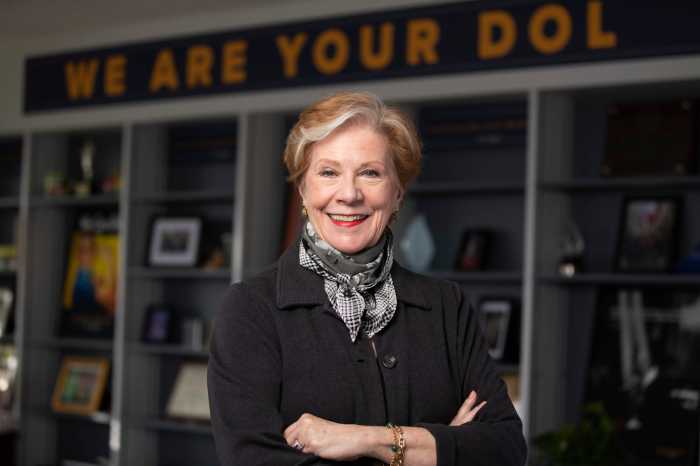New York State Department of Labor Commissioner Roberta Reardon was appointed in 2015 to oversee the Department’s more than 3,300 employees. Previously, Commissioner Reardon served as president of the American Federation of Television and Radio Artists. She was the founding co-president of SAG-AFTRA, a 165,000-member union for the entertainment industry, when the Screen Actors Guild merged with AFTRA. Commissioner Reardon graduated from the Cornell Industrial and Labor Relations School’s New York State AFL-CIO/Cornell Union Leadership Institute.
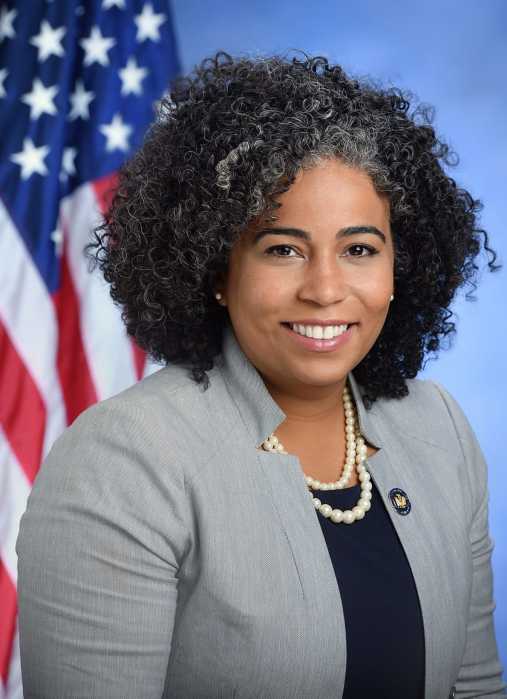
Karines Reyes
Chair of the Subcommittee on Workplace Safety, New York State Assembly

Karines Reyes is an Afro-Latina from Los Mina, Santo Domingo, in the Dominican Republic and has been a Bronxite for over 20 years. She balances the tasks of being a registered Oncology nurse, member of the New York State Assembly, and most importantly being a mother to her two young sons. She has distinguished herself as a leader on issues impacting public health and workers’ rights with prominent legislation like the NY HERO Act.
What sector does your union service (healthcare, construction, etc.)?
Healthcare (1199, NYSNA).
How will New York’s labor force evolve in the next five years?
We will continue to see a rise in successful organizing efforts across our state. Workers have seen the record profit margins that corporations have reached thanks to their labor during the pandemic, and they will not back down.
What kind of impact does organized labor have on local communities?
Organized labor gives members peace of mind knowing that someone will support them in a time of crisis. Whether that be in the form of healthcare or other benefits, it is clear that unions are essential in securing resources that our communities are owed.
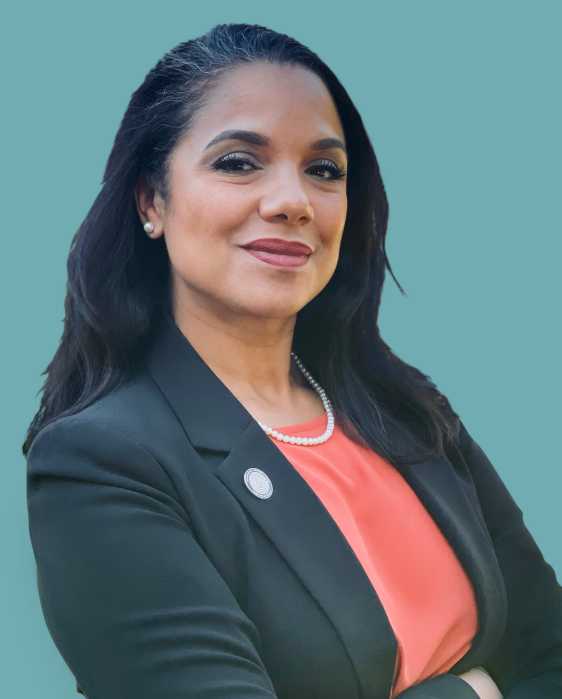
Clarissa Rodriguez
Chair, New York State Workers’ Compensation Board

Clarissa M. Rodriguez, Esq., joined the New York State Workers’ Compensation Board in 2016 and has led the agency through a number of important legislative reforms and improvements, including New York’s landmark Paid Family Leave. Previously, Clarissa worked as a litigator for the Legal Aid Society of New York, the Nassau County Supreme Court, and several nonprofits on issues of food and housing insecurity. She is a graduate of the City University of New York School of Law.
What sector does your union service (healthcare, construction, etc.)?
My agency helps union members and all New York workers access critical workers’ compensation, disability and Paid Family Leave benefits in times of need. We regulate those insurance benefits, so we are in a position to protect workers’ rights in those claims.
What are the benefits that unions (your particular union, if applicable) offer their members?
My father was a proud member of the 32BJ SEIU labor union. He believed strongly in workers’ rights and the many benefits the union afforded him, including steady health coverage, job protection and the power to leverage the collective voice of workers.
What brought you to organizing and/or the issue of worker advocacy?
Raised in an immigrant household, the value of hard work and service was instilled in me early on, and the socio-economic struggles we faced undoubtedly cemented my dedication to social justice and led me full circle to my worker advocacy.
How will New York’s labor force evolve in the next five years?
However it evolves, we’ll evolve alongside it so benefits flow to workers. In times of crisis, like the WTC tragedy and current pandemic, we act immediately. We also make longer-term changes where helpful to workers, like virtual hearings and telehealth.
What kind of impact does organized labor have on local communities?
I can say from personal experience that organized labor raises the standards of living for working people, and in particular, those from traditionally marginalized communities who would otherwise remain relatively unseen.
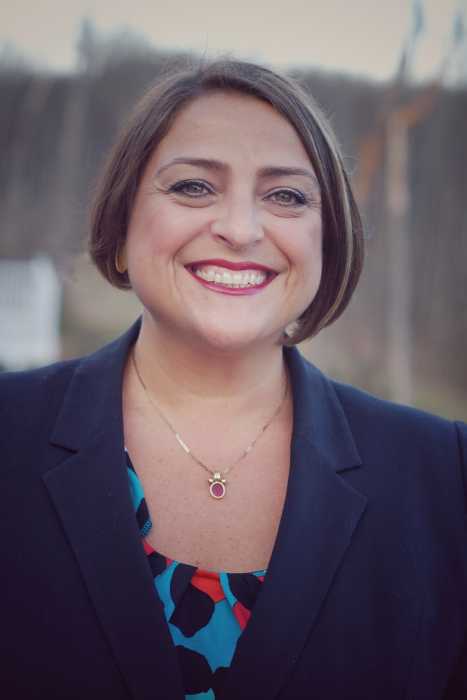
Samantha Rosado-Ciriello
President, Yonkers Federation of Teachers

Born in Puerto Rico, Samantha Rosado-Ciriello is the first Latina president of the YFT, representing over 3,000 educators and serving on NYSUT’s Board, AFT’s Program and Policy Council, AFT’s Latino Issues Task Force and the Westchester/Putnam AFL-CIO. She has worked in Yonkers Public Schools for 27 years as an elementary teacher, and holds degrees in Bilingual and Special Education. She recently served on the NYSED School Re-opening Task Force. Ms. Rosado-Ciriello works to ensure children get a quality education, while advocating for equitable funding and resources as well as fair working conditions.
What sector does your union service (healthcare, construction, etc.)?
Education.
What are the benefits that unions (your particular union, if applicable) offer their members?
As a union member, benefits are available through our local Yonkers Federation of Teachers as well as through our state and national affiliates, including dental and optical care, prescription reimbursements, legal and financial services, to name a few.
What brought you to organizing and/or the issue of worker advocacy?
It is important for teachers to have a voice in the decision-making process that affects laws, policy, working conditions and the education of students. Becoming involved with the union was a vehicle that provided an opportunity for that to happen.
How will New York’s labor force evolve in the next five years?
Over the next five years, 1 in 3 educators will be eligible to retire. Retirements, attrition, and a decline in enrollment in teachers’ prep programs in colleges means that as many as 18,000 teaching positions will be available per year.
What kind of impact does organized labor have on local communities?
It increases wages and benefits, which provide better access to healthcare and directly impacts the local economy, increasing spending, property ownership, and generating tax revenue. In turn it promotes a better school system and increased property values.
Maida Rosenstein
President, UAW Local 2110
Maida Rosenstein is the president of United Auto Workers 2110, whose membership includes technical, office, and professional workers. Ms. Rosenstein has supported grassroots union activity for over 30 years, and she has been involved in graduate worker campaigns at New York University and Columbia University. Ms. Rosenstein also serves as vice chair of the UAW New York State Political Action Council and is chair of UAW’s International Advisory Council on Technical, Office, and Professional Workers.
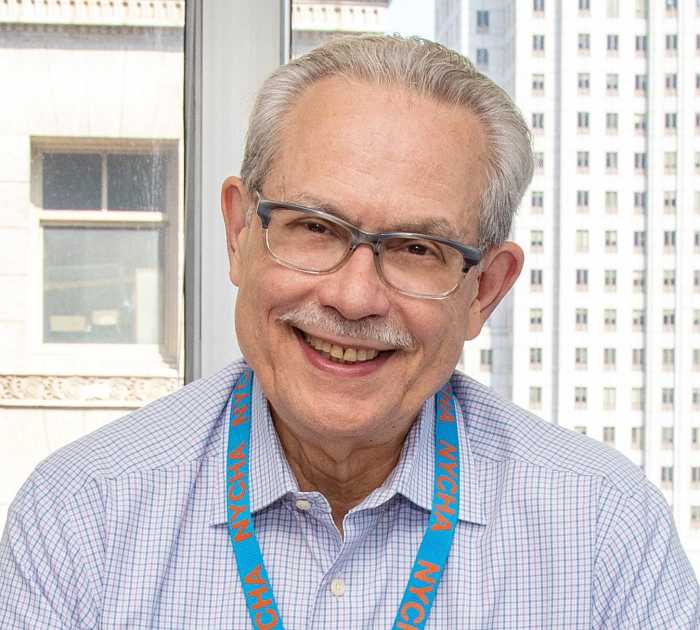
Gregory Russ
Chair and CEO, New York City Housing Authority

Gregory Russ was appointed chair and CEO of NYCHA in August 2019. In a career spanning five decades, Greg has helped to rebuild and strengthen public housing authorities across the country, including in Minneapolis, Cambridge, Detroit, Philadelphia, and Chicago — and also spent time at the U.S. Department of Housing and Urban Development. Greg holds a bachelor’s degree from Shippensburg University and is a member of the Council of Large Public Housing Authorities.
Who does your department/institution serve?
The New York City Housing Authority is the largest public housing authority in North America and was created in 1935 to provide decent, affordable housing for low- and moderate-income New Yorkers. NYCHA is home to roughly 1 in 15 New Yorkers across over 177,000 apartments within 335 housing developments. With a housing stock that spans all five boroughs, NYCHA is a city within a city.
What are some of the programs and services offered by your department/institution?
NYCHA serves over 350,000 residents through the conventional public housing program (Section 9), over 20,000 residents at developments that have been converted to PACT/RAD, and over 75,000 families through federal rent subsidies (the Section 8 Leased Housing Program). In addition, NYCHA connects residents to opportunities in financial empowerment, business development, career advancement, and educational programs.
What impacts do these programs and services have on local communities?
In many markets, the cost of real estate far exceeds what many families and individuals can afford, and public housing fills an essential gap. This is especially true in New York City. NYCHA’s efforts to reform and bring capital investments to its properties are central to improving current conditions for residents and preserving this valuable resource for years to come.
How did you first become involved in public service?
This July will mark 50 years of my involvement in the public housing program, having spent time at the U.S. Department of Housing & Urban Development (HUD) and housing authorities across the country. Over the years, I’ve witnessed the program deliver and experience setbacks, but there’s too much at stake to allow public housing to fail. Although NYCHA is the biggest housing authority in the nation with many challenges, that doesn’t mean we can’t turn it around either. We are at a moment when we could really succeed and doing so will ensure this housing remains available for future generations.
How do you expect your department/institution to change over the next five years?
NYCHA is at a critical juncture following decades of federal disinvestment and has a $40 billion capital need. As part of the 2019 HUD Agreement, NYCHA is fundamentally reorganizing its structure and operations to a neighborhood-based model, and has already begun to implement a work order reform initiative that addresses how NYCHA responds to resident repairs. NYCHA is also working on innovative solutions to raise capital so we can improve and preserve public housing for our residents, while ensuring that they continue to have all the same tenant rights and protections.
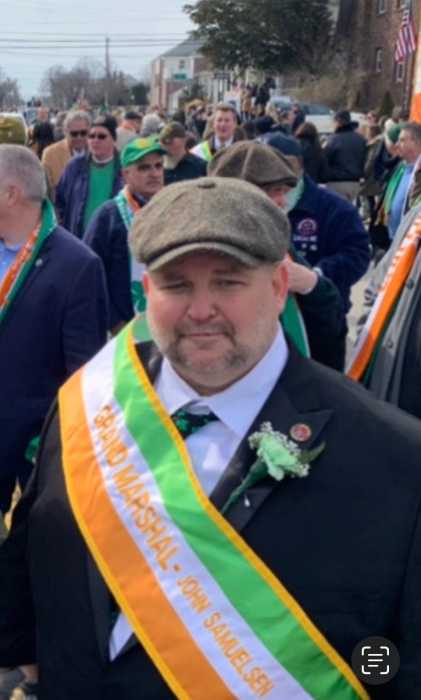
John Samuelsen
International President, Transport Workers Union

John Samuelsen is a New York City Subway Trackworker by trade, with 30 years on the job. He started in the union as a shop steward for a track maintenance gang, rose up through the ranks to become president of TWU Local 100, the largest transit worker local union in the world with 46,000 members. After winning three elections as Local 100 president, Mr. Samuelsen became international president in 2017. He just won his second four-year term as the international TWU president.
What sector does your union service (healthcare, construction, etc.)?
All transportation industries.
What are the benefits that unions (your particular union, if applicable) offer their members?
We fight back against bosses who try to harm us.
What brought you to organizing and/or the issue of worker advocacy?
Dangerous working conditions on New York City subway tracks and the bosses who created those conditions.
How will New York’s labor force evolve in the next five years?
If the unions stand up, fight and deliver for working people, we will prosper.
What kind of impact does organized labor have on local communities?
Huge, priceless impact. The trade unions keep and create the jobs that working communities are built upon.
Scott Sanborn
CEO, LendingClub
Since being appointed CEO of LendingClub in 2016, Scott Sanborn has overseen the management and development of the bank’s operations. Mr. Sanborn leads over 1,000 employees toward achieving LendingClub’s goals of meeting customers’ financial needs through data-driven technology. Prior to joining LendingClub, Mr. Sanborn served as chief revenue officer for eHealth Insurance, president of RedEnvelope, Inc., and senior vice president at the Home Shopping Network.
Thomas Shevlin
President, Nassau County Police Benevolent Association
Thomas Shevlin is the president of the Nassau County Police Benevolent Association, first formed in 1928. Mr. Shevlin’s career in policing began when he joined the NYPD in 1998. He was hired by the Nassau County Police Department in 2005 and became involved as a PBA delegate. He was elected president in January 2022, and now oversees the attainment of the Nassau County Police Benevolent Association’s goal of improving working conditions for police officers.
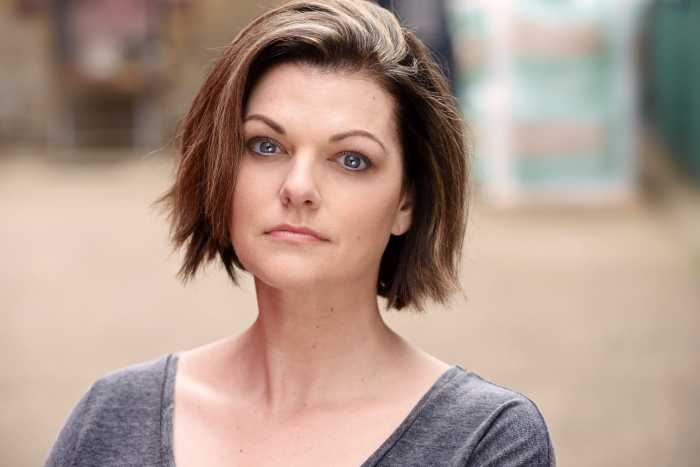
Kate Shindle
President, Actors’ Equity Association

In 2015, Kate Shindle became the youngest member ever to be elected president of Actors’ Equity Association. Since then, she has guided the union through both challenges and growth, including significant contractual gains, clearer institutional focus on diversity and inclusion, increased financial stability, the creation of a convention and new pathways for member participation, more robust public policy priorities, and of course, COVID. Shindle is a working actor whose credits include four Broadway shows, numerous TV/film projects and theatre nationwide.
What sector does your union service (healthcare, construction, etc.)?
Arts and Entertainment, specifically actors and stage managers in live theatre across the country.
What are the benefits that unions (your particular union, if applicable) offer their members?
Access to auditions, guaranteed minimum salaries, safe and sanitary standards, recourse for abuses in the workplace, access to health insurance, a pension and 401(k), protection against misclassification and exploitation, and the recognition that artists are also workers who deserve all of the above.
What brought you to organizing and/or the issue of worker advocacy?
While I was in college, I became a nationally recognized activist due to two things: my passion for HIV/AIDS education and prevention, and that I was advocating on behalf of a traditionally conservative institution as Miss America 1998. That work absolutely lit me up and taught me a lot about raising my voice on behalf of others (for more on that, check out my 2014 book Being Miss America: Behind the Rhinestone Curtain). The labor movement has had a similar effect on me, especially because artists don’t always see the financial value that we bring along with the cultural value, and that we can both love what we do and deserve to make a living wage for it.
How will New York’s labor force evolve in the next five years?
I think a lot of that depends on effective messaging. We’re definitely experiencing a moment of renewed enthusiasm for unions, which I hope leads to a real renaissance for organized labor and thus safer, fairer workplaces. But we have to be careful not to squander that moment. With the speed at which information travels, New York’s labor force is going to become more educated than ever about their rights. Workers know they deserve better, and I believe they are ready to demand it. At the same time, employers’ interests are often in direct opposition, and they’re willing to spend an outrageous amount of money to keep their workers disempowered. We need to pass the PRO Act, and continue to unite workers around our common interests, especially when they’re headed to a voting booth. We also need to take a hard look inward, dismantle some of the vestiges of old patriarchal union structures, remove barriers to access, and welcome historically marginalized communities, for example, into a bigger and more inclusive tent. And we need a very clearly articulated message – so that workers quickly understand why they are joining a union, and how it will benefit them and their families – that can compete with the distortions and lies coming from union-busting law firms and the deep pockets that pay them.
What kind of impact does organized labor have on local communities?
Organized labor means that more people living and working in a community will earn a living wage. And I strongly believe that this is a moral imperative, but it also leads to a more robust economy and healthier communities. There is just simply inherent value and dignity in the knowledge that your hard day at work results in the ability to support yourself and your family, and that your efforts each day – in the safe and sanitary workplace you deserve – will afford you reasonable paid leave, health coverage, protection from discrimination and other abuses, and a better future. That kind of fulfillment doesn’t just benefit individual workers; it makes communities stronger.


